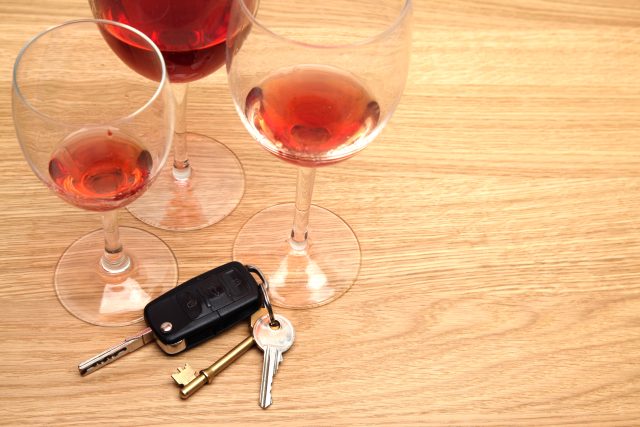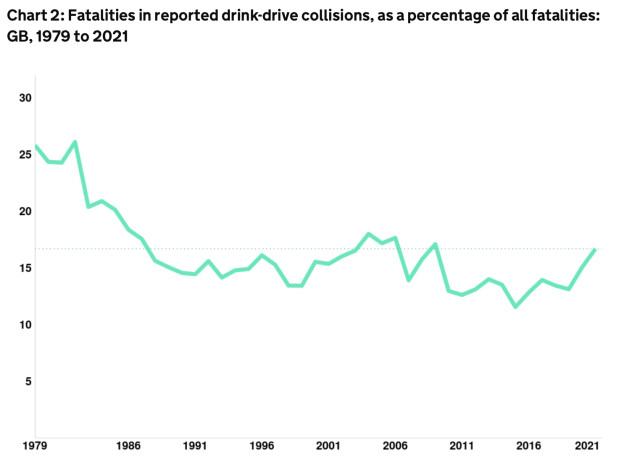This website uses cookies so that we can provide you with the best user experience possible. Cookie information is stored in your browser and performs functions such as recognising you when you return to our website and helping our team to understand which sections of the website you find most interesting and useful.
Is there any evidence to reduce drink-driving limits?
The British medical profession is calling on the government to reduce the drink-driving limit to just 50mg. But is there a firm evidence base for such a decision? db investigates.

Doctors are calling for the drink-drive limit to be reduced to the equivalent of a small glass of wine or beer. The BMA made the statement in collaboration with a range of other organisations representing medical professional bodies, alcohol and road safety charities and campaign groups, police and emergency services, and others.
The group argued that the limit in England, Wales and Northern Ireland was “the highest in Europe” at 80m of alcohol per 100ml of blood, and highlighted how in Scotland it is currently 50mg.
Lowering further
Alongside calling for the next government to reduce the limit to 50mg, it also argued that it should be just 20mg — which is only just over the ‘passable’ limit for detection at 5-10mg — for new and commercial drivers.
They claimed that the “harm caused by alcohol and other drugs, including when driving under the influence, places an avoidable burden on individuals and our society, emergency services, the NHS, and the economy”.
Alcohol and drug-related deaths were at a “record high in 2021 and 2022”, they claimed, and that collisions caused by driving under the influence “continues to claim hundreds of lives across the UK each year”.
Falling
But the news from the group comes despite the government says “the prevalence of drink-driving in road deaths has fallen over time”.
In 1979, 26% of road deaths occurred in collisions where at least one driver or rider was over the drink-drive limit. This had fallen to 15% by 1989. Since then the percentage of road deaths that are drink-drive related has varied between 12% and 18%.
In 2021, the rate was 17%, which is within this average level, although it has risen slightly. The government figures state that this “may have been the result of the Covid 19 pandemic”.

Also, in a series of posts on X (formerly Twitter), the overall claims about the evidence base of reducing the level to 50mg were rebuffed by Christopher Snowdon of the Institute of Economic Affairs.
As I say in this article, lowering the drink-drive had absolutely no effect in Scotland and there is no reason to think it would work in England. Three studies have looked at this. https://t.co/FcO7jByBrb
— Christopher Snowdon (@cjsnowdon) June 18, 2024
He highlighted how several studies, including one “thorough study” undertaken by the medical journal The Lancet, provided evidence that it had not reduced road deaths, and was not “associated with a significant change in weekly road traffic accident rates”.
In The Lancet‘s 2019 study, it said: “Lowering the [limit] was not associated with a reduction in [road traffic accidents], but this change was associated with a small reduction in per-capita alcohol consumption from on-trade alcohol sales.”
In its own assessment, the BMA highlighted 2010 National Institute for Health and Care Excellence (NICE) estimates, which modelled collisions in England and Wales based on research conducted in other countries in Europe and Australia, and claimed that more than 150 lives a year could be saved by lowering the drink drive limit to 0.05%.
But as Snowdon pointed out, there could be a plus-side: extending opening hours has been shown to reduce alcohol-related deaths from driving.
The good news is that there is a way of reducing road traffic accidents. Liberalising opening hours! https://t.co/I5jMC2udkV
— Christopher Snowdon (@cjsnowdon) June 18, 2024
Related news
Russian company trademarks Trump vodka
Autumn Budget a 'kick in the teeth' for wine and spirits
Will EU policymakers ‘shackle’ or ‘support’ the beer sector?

